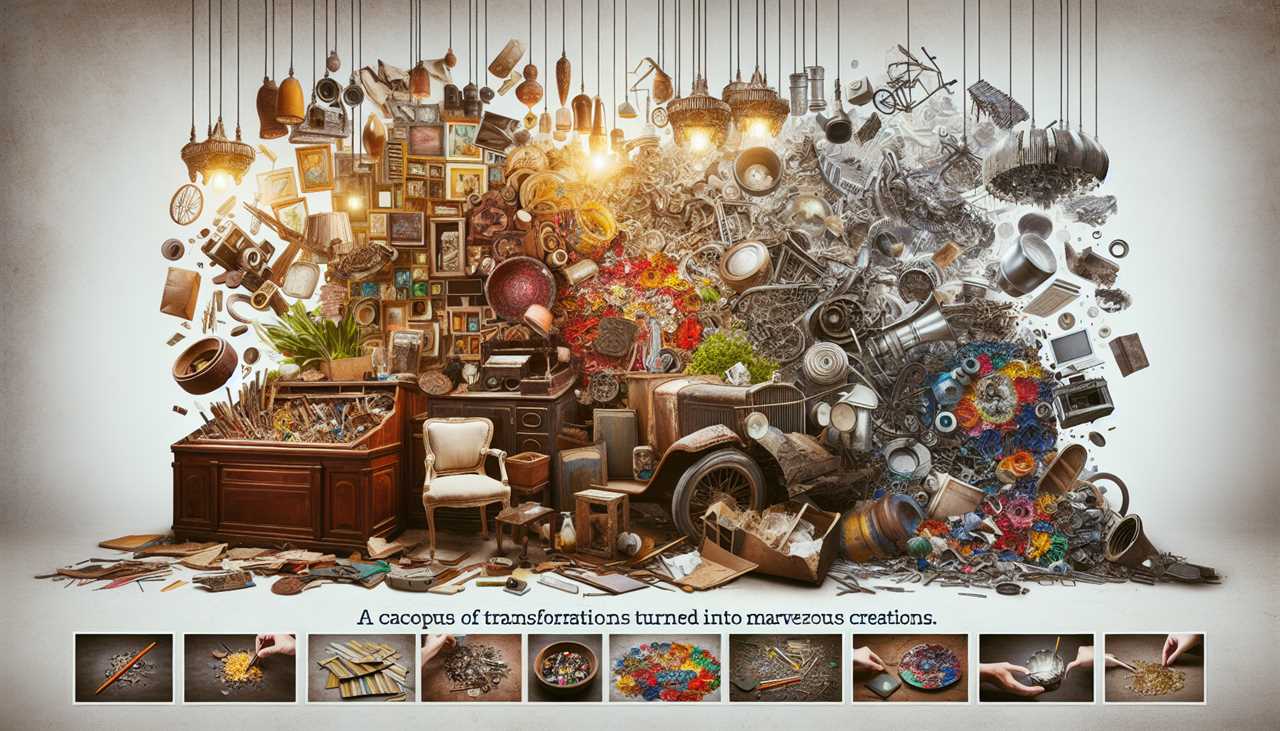Entertainment
From Waste to Wonder: The Art of Repurposing and Reimagining
Repurposing is redefining how we use our resources, transforming old items into innovative solutions. It’s a sustainable practice that challenges us to see the

In today’s world, we’re constantly seeking innovative ways to make the most of our resources. One of the most exciting and impactful trends in this arena is the art of repurposing. This practice goes beyond simple recycling; it’s about reimagining items and materials in completely new and unexpected ways. We’re here to guide you through the fascinating world of repurposing, showing you how it can transform your life, your home, and even your business.
Article Summary
The Power of Repurposing
Repurposing is more than just a trendy buzzword. It’s a powerful concept that can help us reduce waste, save money, and unleash our creativity. When we repurpose, we’re not just giving new life to old items – we’re challenging ourselves to see the potential in everything around us. This mindset shift can lead to incredible innovations and solutions to everyday problems.
Adaptation: The Key to Successful Repurposing
At its core, repurposing is all about adaptation. We’re taking something designed for one purpose and adapting it to serve another. This process requires us to think outside the box and see objects not for what they are, but for what they could be. For example, an old ladder can be adapted into a unique bookshelf, or a vintage suitcase can become a stylish side table. The possibilities are limited only by our imagination.
Transformation: From Old to New
The magic of repurposing lies in the transformation process. It’s incredible to see how a bit of creativity and elbow grease can turn something destined for the landfill into a prized possession. We’ve seen old tires become trendy outdoor seating, wine bottles transformed into elegant light fixtures, and shipping containers converted into modern homes. These transformations not only give new life to old items but also create unique, one-of-a-kind pieces that tell a story.
Repackaging: A Business Perspective
Repackaging is a form of repurposing that’s particularly relevant in the business world. It’s about taking existing products, services, or content and presenting them in new ways to reach different audiences or serve new purposes. For instance, a company might repackage its professional development workshop content into a series of online courses, reaching a wider audience and creating a new revenue stream.
Upcycling: Adding Value Through Repurposing
Upcycling is a subset of repurposing that focuses on creating something of higher value than the original item. This could mean turning old jeans into a trendy tote bag, or repurposing discarded wood pallets into rustic furniture. Upcycling not only reduces waste but also allows us to create unique, high-quality items without the need for new raw materials.
Reimagining: The Heart of Creativity
Reimagining is the creative spark that drives the repurposing process. It’s about looking at the world with fresh eyes and seeing potential where others see waste. We can reimagine a broken umbrella as a unique lampshade, or envision a collection of old books as a sturdy and stylish coffee table base. This process of reimagining challenges us to be more creative and resourceful in our daily lives.
Revamping: Giving New Life to Old Spaces
Revamping is a form of repurposing that’s particularly relevant to interior design and home improvement. It’s about breathing new life into old spaces without starting from scratch. This could involve repurposing an old door as a headboard, turning vintage suitcases into quirky storage solutions, or transforming an unused closet into a cozy home office nook.
The Environmental Impact of Repurposing
One of the most significant benefits of repurposing is its positive impact on the environment. By giving new life to old items, we’re reducing the demand for new products and the resources required to produce them. We’re also keeping items out of landfills, reducing waste and pollution. Every time we repurpose an item, we’re making a small but meaningful contribution to environmental conservation.
The Economic Benefits of Repurposing
Repurposing isn’t just good for the environment – it’s also great for our wallets. By finding new uses for items we already own, we can save money on new purchases. For businesses, repurposing can lead to new product lines or revenue streams without significant investment in new resources. It’s a win-win situation that benefits both our bank accounts and the planet.
Repurposing in the Digital Age
In the digital era, repurposing has taken on new dimensions. We can repurpose digital content, turning blog posts into podcasts, or social media posts into e-books. This digital repurposing allows us to reach new audiences and extend the life and value of our content. It’s an exciting frontier in the world of repurposing that opens up countless possibilities.
The Future of Repurposing
As we become increasingly aware of the need for sustainable practices, repurposing is set to play an even more significant role in our lives and businesses. We’re likely to see more innovative repurposing solutions, from large-scale industrial applications to creative DIY projects. The future of repurposing is bright, and it’s an exciting time to be part of this movement.
In conclusion, repurposing is more than just a trend – it’s a mindset that can transform how we view and interact with the world around us. By embracing the art of repurposing, we’re not just giving new life to old items – we’re reimagining our relationship with consumption and waste. So next time you’re about to throw something away, pause for a moment. Could it be repurposed? Could it be reimagined? You might be surprised at the wonders you can create from what others see as waste.

Hey there! I’m William Cooper, your go-to guy for all things travel at iMagazineDaily. I’m 39, living the dream in Oshkosh, WI, and I can’t get enough of exploring every corner of this amazing world. I’ve got this awesome gig where I blog about my travel escapades, and let me tell you, it’s never a dull moment! When I’m not busy typing away or editing some cool content, I’m out there in the city, living it up and tasting every crazy delicious thing I can find. Join me on this wild ride of adventures and stories, right here at iMagazineDaily. Trust me, it’s going to be a blast! 🌍✈️🍴







You must be logged in to post a comment Login